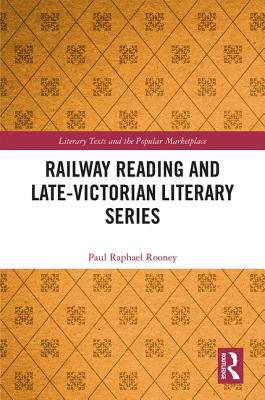
- Afhalen na 1 uur in een winkel met voorraad
- Gratis thuislevering in België vanaf € 30
- Ruim aanbod met 7 miljoen producten
- Afhalen na 1 uur in een winkel met voorraad
- Gratis thuislevering in België vanaf € 30
- Ruim aanbod met 7 miljoen producten
Railway Reading and Late-Victorian Literary Series
Paul Raphael RooneyOmschrijving
The railway was one of the principal Victorian spaces of reading. This book spotlights one of the leading audience demographics in this late-Victorian market: the newly empowered readers of the expanding middle class. The transactions in which late-Victorian readers acquired the books read whilst travelling are reconstructed by exploring the leading determinants of consumers' purchasing choices at the railway station bookstalls selling books intended for reading in this zone. This exploration concentrates on the impact of forces like the input of the staff running the bookstalls and the commercial environment in which consumers made their purchases.
At the center of this study is a leading (and still relatively under-examined) genre of Victorian print culture circulating in this reading space― the series. Rooney examines three leading examples of late-Victorian series, which sought to satisfy railway passengers' need for literary reading matter. Many of the period's principal authors and literary genres featured in their lists. Each venture is representative of one of the three main pricing tiers of series publishing. Employing an eclectic methodological framework combining cultural studies and book history approaches with concepts from the new humanities, the reading experiences furnished by the light fiction of these series are reconstructed. This study reflects the recent growth in scholarship on historical readership, the expansion in the canon of Victorian popular literature, and the broader material turn in nineteenth-century studies.
Specificaties
Betrokkenen
- Auteur(s):
- Uitgeverij:
Inhoud
- Aantal bladzijden:
- 180
- Taal:
- Engels
- Reeks:
Eigenschappen
- Productcode (EAN):
- 9781138285637
- Verschijningsdatum:
- 30/04/2018
- Uitvoering:
- Hardcover
- Formaat:
- Genaaid
- Afmetingen:
- 152 mm x 229 mm
- Gewicht:
- 384 g

Alleen bij Standaard Boekhandel
Beoordelingen
We publiceren alleen reviews die voldoen aan de voorwaarden voor reviews. Bekijk onze voorwaarden voor reviews.











